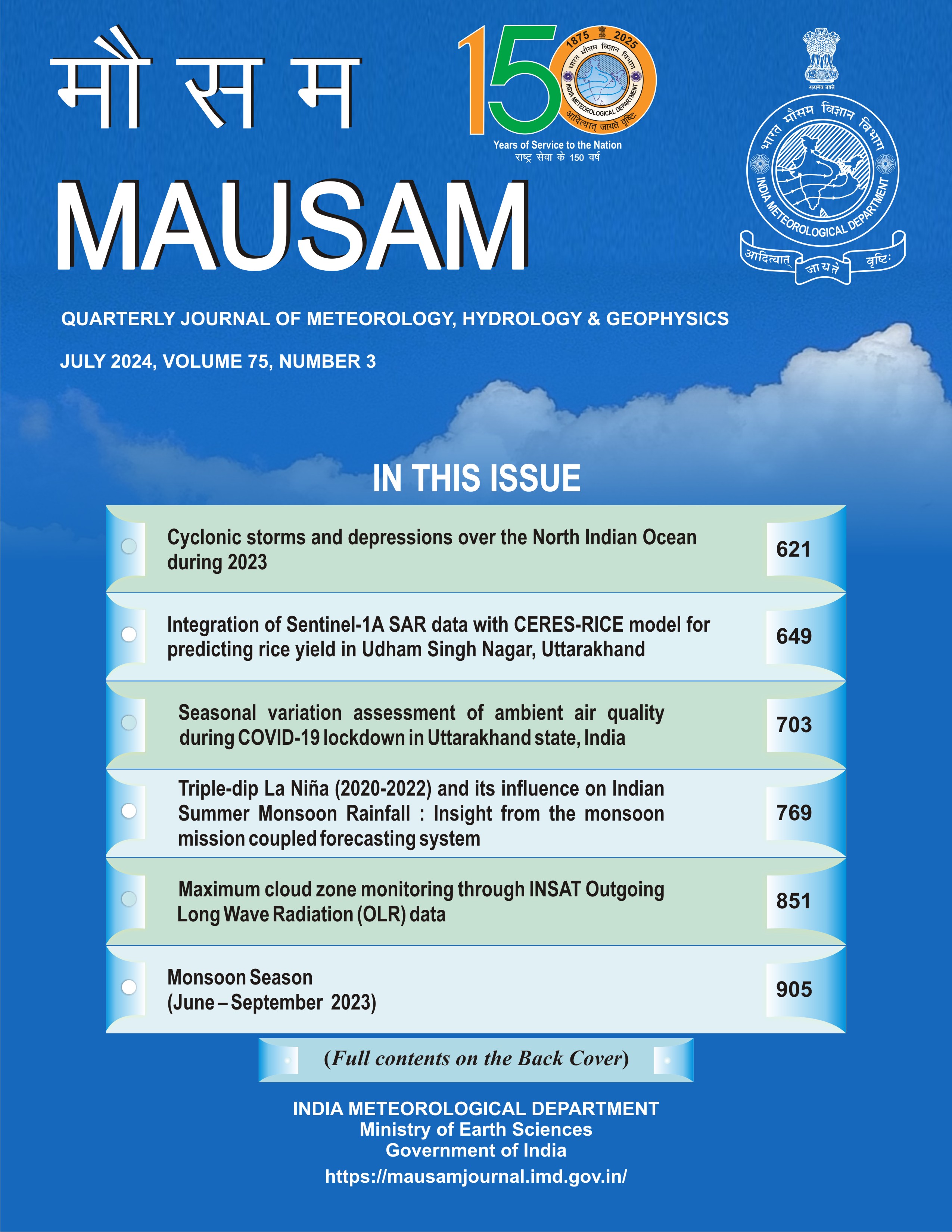Assimilation of KOMPSAT-5 Bending Angle in GSI 4D-EnVar Assimilation System
DOI:
https://doi.org/10.54302/mausam.v75i3.4892Abstract
Bending Angle from KOMPSAT-5 (Korea Multi-Purpose Satellite-5) GNSS-RO (Global Navigation Satellite System - Radio Occultation) data is assimilated in Global Data Assimilation and Forecast System. The observations are incorporated using the GSI (Grid-point Statistical Interpolation) 4D-EnVAR analysis scheme. Before assimilation, the data is processed and undergoes quality control by CDAAC (COSMIC Data Analysis and Archive Center), UCAR (University Corporation for Atmospheric Research). The evaluation & assessment procedure goes through four phases: 1) diagnostics through assimilation in cold start mode; cyclic assimilation for a 2) summer and a 3) winter month; 4) a case study for investigating the impact on the severe weather event. Two separate NWP forecast experiments, a control (named CTRL) and the experiment (called KOMPSAT5), are run simultaneously. The only difference between the two is the presence (in KOMPSAT5) and absence (in CTRL) of the KOMPSAT-5 GNSS-RO. Summer cycle statistics show better, significant and consistent improvement compared to the winter cycle.
Downloads
Published
How to Cite
Issue
Section
License
Copyright (c) 2024 MAUSAM

This work is licensed under a Creative Commons Attribution-NonCommercial 4.0 International License.
All articles published by MAUSAM are licensed under the Creative Commons Attribution 4.0 International License. This permits anyone.
Anyone is free:
- To Share - to copy, distribute and transmit the work
- To Remix - to adapt the work.
Under the following conditions:
- Share - copy and redistribute the material in any medium or format
- Adapt - remix, transform, and build upon the material for any purpose, even
commercially.



